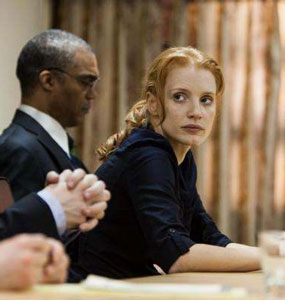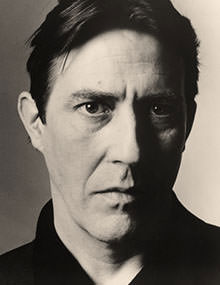 I don’t think any actress has had the rapid career trajectory of Jessica Chastain — in 2010 she was a virtual unknown, and in a few weeks she will likely be nominated for an Oscar for the second consecutive year. She’s already been nominated for many other awards for Zero Dark Thirty, in which she stars as a CIA operative named Maya who was instrumental in locating Osama bin Laden’s hiding place. vulnerable
I don’t think any actress has had the rapid career trajectory of Jessica Chastain — in 2010 she was a virtual unknown, and in a few weeks she will likely be nominated for an Oscar for the second consecutive year. She’s already been nominated for many other awards for Zero Dark Thirty, in which she stars as a CIA operative named Maya who was instrumental in locating Osama bin Laden’s hiding place. vulnerable
In a conversation with The Hollywood Reporter, Chastain spoke about the difficulties of playing an individual with such a stoic nature and whose real-life identity remains unknown.
The film opens with a scene in which a member of al-Qaida is waterboarded and abused in order to reveal information. Chastain’s character is in the scene observing the interrogation.
She reveals, “It was really difficult to film even though, of course, we’re acting. But we filmed it in an active Jordanian prison. The energy wasn’t the best in that place. I’m playing a woman who’s trained to be unemotional and analytically precise. I’ve been trained my whole life to be emotional and to let all my walls down and be very vulnerable. So to put myself in a situation like that, it’s like I have to not follow my instincts — and my instincts, it seemed like that would be to cry. So I had to then show her discomfort, but to go back to her training of being unemotional.”
Though Chastain plays a real-life operative, because she works for the CIA and her identity must remain secret Chastain never got to meet the person her character is based on. She was therefore able to create a lot of her character’s personality. She explains, “Anything I couldn’t find in the research about Maya, I then used my imagination to create. Like silly things, like what her favorite candy in America would be. You know the scene where I’m wearing the robe and I’m eating candy? Stuff like that, so I could answer questions. I also had to create a backstory. You see in the movie, you see there’s a drawing by a child. You see postcards. All these things that I had created from this history of this woman that would make sense and go along with the research I had made of her.”

